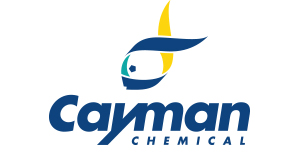CES2 (human, recombinant)
CES2 (human, recombinant)
Artikelnummer
CAY38069-500
Verpackungseinheit
500 µg
Hersteller
Cayman Chemical
Verfügbarkeit:
wird geladen...
Preis wird geladen...
Formulation: Lyophilized from sterile 50 mM sodium acetate, with 150 mM sodium chloride, and 10% glycerol, pH 5.5
Purity: ≥95% estimated by SDS-PAGE
Shelf life (days): 365
Notes: Carboxylesterase 2 (CES2) is a serine hydrolase with a major role in endo- and xenobiotic metabolism.{68296} It exists as a monomer and is composed of an α/β-hydrolase fold, a regulatory domain, a catalytic domain, and an HTEL endoplasmic reticulum (ER) localization sequence at the C-terminus.{68297,68296} CES2 is mainly expressed in liver, kidney, and small intestine, but is also found in cardiovascular and reproductive tissues.{68298} It is involved in the metabolism of several xenobiotics, including anticancer prodrugs and cocaine, and also has triacylglycerol and diacylglycerol hydrolase activity.{62524,68297,68296} Generally, CES2 prefers to hydrolyze esters with a large alcohol moiety and a small acyl group.{68296} Knockdown of CES2 decreases fatty acid oxidation, glucose uptake, and glycogen synthesis and increases the expression of genes involved in gluconeogenesis and ER stress in primary human hepatocytes.{68299} Hepatic overexpression of Ces2 decreases hepatic triglyceride and cholesterol levels in db/db mice and in a mouse model of obesity induced by a high-fat diet.{68300} Liver levels of CES2 are decreased in patients with obesity or non-alcoholic steatohepatitis (NASH) and tumoral levels of CES2 decrease with increasing tumor grade in patients with colorectal cancer.{68299,68300,68301} Cayman’s CES2 (human, recombinant) protein can be used for enzyme activity assays. This protein consists of 544 amino acids, has a calculated molecular weight of 60.4 kDa, and a predicted N-terminus of Gln27 after signal peptide cleavage.
Purity: ≥95% estimated by SDS-PAGE
Shelf life (days): 365
Notes: Carboxylesterase 2 (CES2) is a serine hydrolase with a major role in endo- and xenobiotic metabolism.{68296} It exists as a monomer and is composed of an α/β-hydrolase fold, a regulatory domain, a catalytic domain, and an HTEL endoplasmic reticulum (ER) localization sequence at the C-terminus.{68297,68296} CES2 is mainly expressed in liver, kidney, and small intestine, but is also found in cardiovascular and reproductive tissues.{68298} It is involved in the metabolism of several xenobiotics, including anticancer prodrugs and cocaine, and also has triacylglycerol and diacylglycerol hydrolase activity.{62524,68297,68296} Generally, CES2 prefers to hydrolyze esters with a large alcohol moiety and a small acyl group.{68296} Knockdown of CES2 decreases fatty acid oxidation, glucose uptake, and glycogen synthesis and increases the expression of genes involved in gluconeogenesis and ER stress in primary human hepatocytes.{68299} Hepatic overexpression of Ces2 decreases hepatic triglyceride and cholesterol levels in db/db mice and in a mouse model of obesity induced by a high-fat diet.{68300} Liver levels of CES2 are decreased in patients with obesity or non-alcoholic steatohepatitis (NASH) and tumoral levels of CES2 decrease with increasing tumor grade in patients with colorectal cancer.{68299,68300,68301} Cayman’s CES2 (human, recombinant) protein can be used for enzyme activity assays. This protein consists of 544 amino acids, has a calculated molecular weight of 60.4 kDa, and a predicted N-terminus of Gln27 after signal peptide cleavage.
| Artikelnummer | CAY38069-500 |
|---|---|
| Hersteller | Cayman Chemical |
| Hersteller Artikelnummer | 38069-500 |
| Verpackungseinheit | 500 µg |
| Mengeneinheit | STK |
| Wirt | Cell Line |
| Produktinformation (PDF) | Download |
| MSDS (PDF) |
|

 English
English








